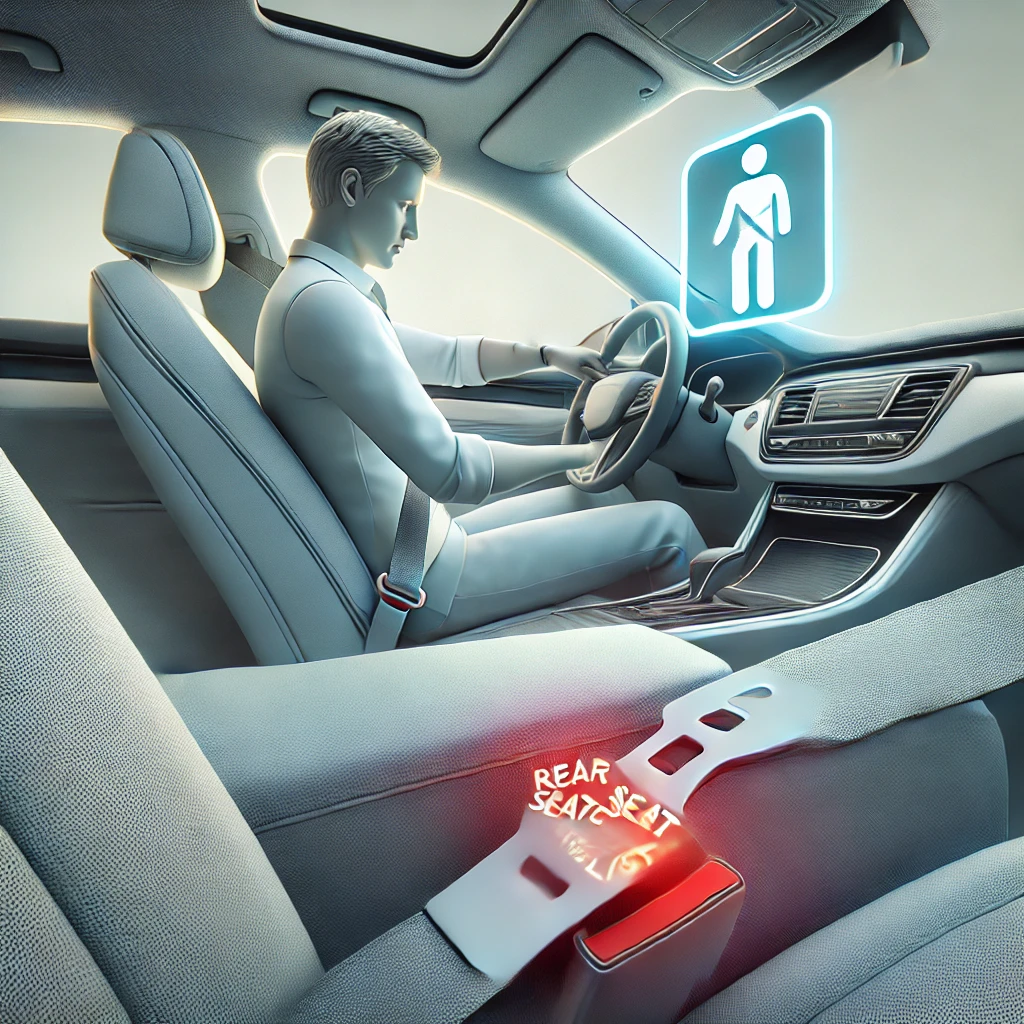
New Seat Belt Safety Rule: Rear Seat Warnings Become Mandatory
From 2024, new regulations regarding seat belt warnings for rear-seat passengers is coming into force across the automotive industry. This key safety upgrade, which has been put in place to combat growing deaths among unbelted rear-seat riders, signals the changing priorities of auto safety regulations. To comply and enhance passenger safety, manufacturers are to incorporate this regulation into their new models.
The Importance of Rear Seat Belt Warning Systems
When it comes to seat belt use, rear-seat passengers are an afterthought, but recent studies show quite a disturbing statistic. As per the National Highway Traffic Safety Administration (NHTSA), rear-seat passengers who do not use seat belts are eight times more likely to experience serious injuries in a crash than belted rear-seat passengers.
Rear seat belt reminders are a key factor in helping recognize safer habits. And while front-seat seat belt reminders have been common for years, rear-seat alerts have been a missing link in a key safety feature. The new regulation fills that void so that all vehicle occupants have the same priority.
Important Features of the New Rear Seat Belt Rule
The rule mandates:
Audible and Visual Alerts: The new rule requires sound warnings and dashboard indicators to remind rear passengers to buckle up.
Integration of Advanced Sensors: Weight and pressure sensors will be placed on the rear seats to detect if they are occupied.
Multi-Staged Alerts: The system increases reminder notifications if the seat belt has not been locked after the vehicle is in motion.
Standard Implementation: This system must be incorporated into all new passenger vehicles launched after 2024
The updated requirements fall in line with international safety standards already implemented in areas such as Europe and Asia, where rear seat belt warnings must be included.
Passenger Safety Impact
Having rear seat belt reminders is crucial. According to a study conducted by the Insurance Institute for Highway Safety (IIHS), unbelted passengers in the rear seat can also lead to catastrophic injuries to both those occupants and front-seat occupants in the event of a collision.
Rear seat belts reduce the risk of death in car crashes by 56% and in vans and SUVs by 74%. Including active reminder systems will ensure compliance will rise dramatically, which will correspondingly reduce injury/fatality rates across all demographics of passengers.
How The Technology Works: An In-Depth Analysis
Weight and Pressure Sensors
Most vehicles today have rear-seat occupancy sensors built into them. Once the system detects an unbuckled passenger, it will trigger a first visual alert.
Visual Indicators
Onboard displays, integrated into the vehicle’s dashboard or infotainment system, offer moment-to-moment updates on the status of seat belts in use on occupied rear seating positions.

Audible Alerts
If belts go unbuckled, escalating warning chimes sound from the system. These alerts emulate the systems that already exist for front-seat inhabitants but are specifically for rear-seat scenarios.
Compliance Verification
The alerts stop automatically once seat belts are fastened, leading to a seamless passenger experience.
Pros and Cons for the Car Makers
The rear seat belt warning system will be technically and logistically challenging for automakers. Combining the technology into upcoming designs is far more cost-effective than retrofitting existing models. Systems that operate with very low false positives are subject to exacting engineering and tuning to keep them within regulatory constraints.
The good news is that as safety ratings of vehicles improve with the inclusion of such features, it can result in increased trust among consumers whilst establishing strong brand recognition. New regulatory frameworks and market demands mean that those manufacturers who focus on both compliance and innovation will have a significant competitive edge in an increasingly safety-conscious market.
Consumer Involvement in Compliance
And as the technology in vehicles evolves and redefines the funnels of automotive retail, the behavior of the passenger will mean more than ever. Whether rear seat belt warnings will prove successful depends on the action taken by drivers and passengers when receiving alerts and adopting safer habits. The need for public awareness efforts and education will take center stage in reminding everyone of the need to wear their seatbelts.
ILIYKI drivers and passengers: tips and recommendations
Before driving, always buckle up all passengers.
Know your vehicle’s seat belt reminder system.
Instruct children and teens on the necessity of wearing seat belts, even if they are sitting in the back seat.
Conclusion: A Victory for Vehicle Safety
The scrapping of its rear seat belt warning system marks a long way in the road of road safety. If passed, this would be a life-saving, commonsense regulation that fills a void in the efforts to make public transport safer for all passengers. We take a step closer to a future in which every journey is a safer journey for everyone in every vehicle, with automakers, regulators,, and consumers working together towards that goal.
